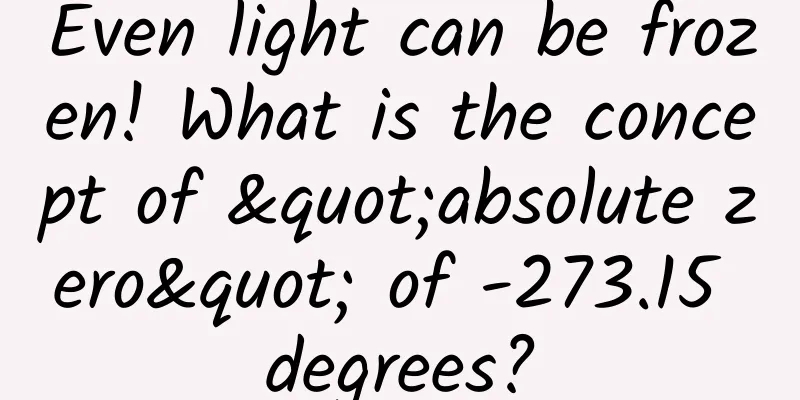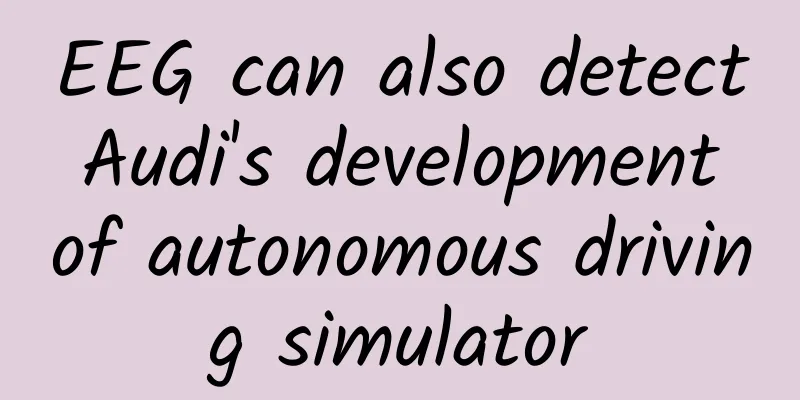Even light can be frozen! What is the concept of "absolute zero" of -273.15 degrees?

|
What is temperature? You might think, isn't temperature just how cold or hot something is? That's right. In the early 16th century, Galileo invented a simple thermometer to measure temperature. But if we ask a further question, what does the temperature we measure actually reflect? Isn't it not so easy to answer? In fact, temperature is the macroscopic manifestation of the thermal motion of molecules, atoms or smaller particles that make up matter. It can be said that the higher the measured temperature, the more intense the thermal motion of particles. Then the next question is, is there an upper and lower limit to temperature? Scientists have theoretically speculated that there is an upper limit to temperature, called the Planck temperature. However, this temperature is very, very high, at 140 million million million million degrees Celsius. This temperature only existed at the moment when the universe was born. It is impossible to reach this upper limit in the universe where humans live today. Therefore, in daily life, the upper limit of temperature is far beyond human imagination. Is there a lower limit to temperature? It is safe to say that temperature has a lower limit. This is determined by the definition of temperature. When the thermal motion of all particles in an object stops, the object reaches the lower limit of temperature. This lower limit is called absolute zero. The temperature of absolute zero is equal to 0 Kelvin (K), which is -273.15 degrees Celsius (℃). What is the concept of this? According to the Guinness World Records, the coldest place on Earth is in Antarctica, with a minimum temperature of -89.12 degrees Celsius. Liquid nitrogen, which is commonly used for refrigeration, is only -196°C, which is 77 Kelvin. Even the best refrigerant, liquid helium, generally reaches -269°C, which is 4.2 Kelvin. Image source: pixabay This temperature seems to be only a millimeter away from absolute zero. So if we try harder, can we reach absolute zero? As mentioned before, when the temperature reaches absolute zero, the thermal motion of molecules and atoms will stop, as if they were completely frozen. But when the temperature is close to absolute zero, the macroscopic laws of physics we are familiar with are no longer applicable, and another complex law of physics - quantum mechanics - will dominate. For any observed particle in the universe, it is impossible to accurately know both its momentum and its exact position at the same time. This is the famous Heisenberg uncertainty principle. Assuming that matter is cooled to the point where all particles stop thermal motion, it means that the position and momentum of each particle can be accurately determined at the same time, but this is impossible under the constraints of the uncertainty principle. To take a step back, even if we really reach absolute zero, it does not mean that all motion stops completely, because the quantum fluctuations of particles still exist, but the average thermal motion is zero. But it is obviously almost impossible to do this. After all, the number of microscopic particles in matter is too large. As long as the measurement is precise enough (which is actually impossible), it is hopeless that the average value reaches absolute zero. Therefore, absolute zero is a theoretical value that we cannot achieve, but we can get as close to it as possible. So, where is the coldest place in the universe? Is it in deep space? It is indeed very cold in deep space, but the microwave background radiation left over from 13.7 billion years after the Big Bang fills space, and the average temperature of space is only 2.73 Kelvin. Scientists can achieve lower temperatures than the depths of the universe through some means. Dilution refrigeration with He-3 and He-4 can reach temperatures below 0.01 K, adiabatic demagnetization technology can reach temperatures below 0.001 K, and modern laser refrigeration technology can cool molecules to 0.000001 K, or atoms to 0.00000000045 K. This is very, very close to absolute zero. Why do scientists study such low temperatures? In fact, when the temperature of an object is very low, many magical things will happen. Most materials have electrical resistance at room temperature, but many materials have resistance that becomes zero at low temperatures. Zero resistance means zero current energy loss, and cables made of superconducting materials can greatly reduce energy loss in the process of transmitting electrical energy. What's more amazing is that superconducting materials at low temperatures will also be completely anti-magnetic, resisting almost all external magnetic fields. Even if something with a strong enough magnetic field enters the material, it can firmly pin the magnetic flux lines. The superconducting maglev train was invented using this property. It is faster and safer than conventional maglev trains. Of course, there will be many unexpected phenomena at ultra-low temperatures, such as superfluids or even supersolids, charge fractionation, etc. These quantum effects will be very obvious. Just imagine, if we can control low temperatures and manipulate quantum as we please, the future will definitely be very different! The article is produced by Science Popularization China-Starry Sky Project (Creation and Cultivation). Please indicate the source when reprinting. Author: Science scraps popular science team Reviewer: Luo Huiqian, Researcher, Institute of Physics, Chinese Academy of Sciences |
Recommend
Apple's legendary design team disbanded, but Jobs is not
This article is reprinted with permission from AI...
Why is your APP not as good as others? Because you didn't make it "come alive"!
Many CPs are saying that my APP framework and con...
Complete list of product promotion channels in 2019!
Many advertisers will ask what channels are avail...
Why is the sky dark at night? The Big Bang theory explains →
Author: Duan Yuechu and Huang Xianghong On a clea...
This public security chief who died at his post deserves our highest respect!
On the evening of September 24, 2021, Pan Dongshe...
Dongfeng is not in debt. Has the window of opportunity for OLED TV explosion arrived?
It is said in "The Art of War" that &qu...
Just look up for 1 second and you will be happy instantly! You must try this 0-cost stress relief method
In our busy lives, we always keep our heads down,...
iOS17 is now available for update! Netizens tested it and found it to be very cool, but the battery life is...
iOS 17 is finally here and was officially pushed ...
User retention strategy for product operation!
From the user's perspective, each product act...
5 social media trends to watch in 2016
[[161459]] In the past, we could only rely on two...
[High-end boutique] Kuaishou unmanned live broadcast mobile version sold for 588 [live broadcast script + software operation tutorial]
[High-end boutique] Kuaishou unmanned live broadc...
Analysis of the full activity of Zebra AI course APP for old and new students
1. Case Link Official website personal center ent...
Which industries is Baidu Information Flow suitable for? How to deliver?
Which industries are suitable for Baidu informati...
How to make the most of your Google Ads budget? Share 4 tips!
You can run an advertising campaign even with a d...









